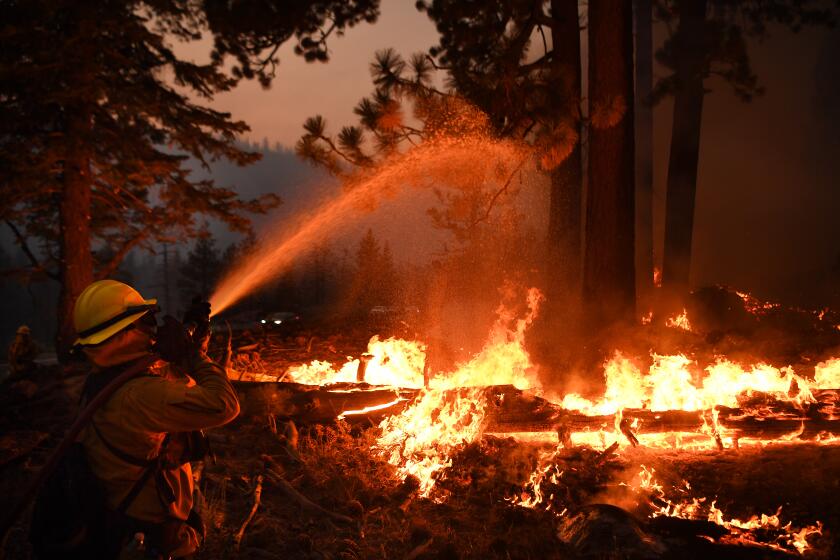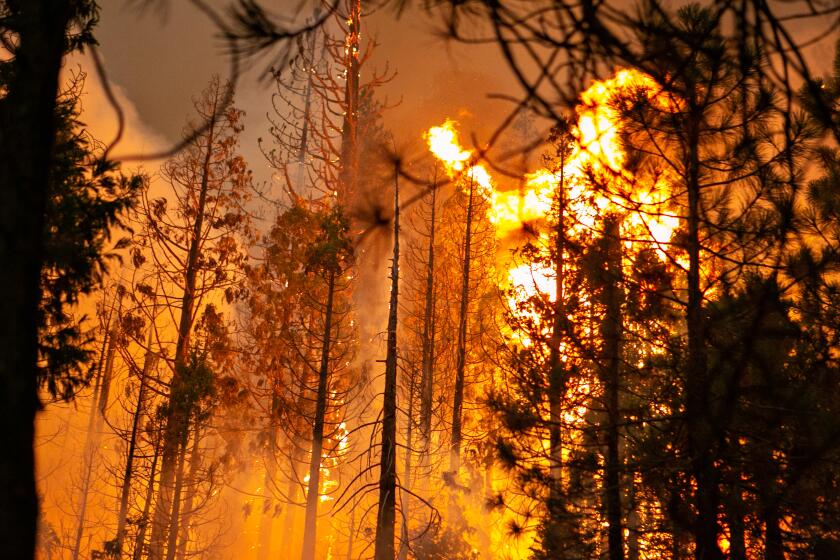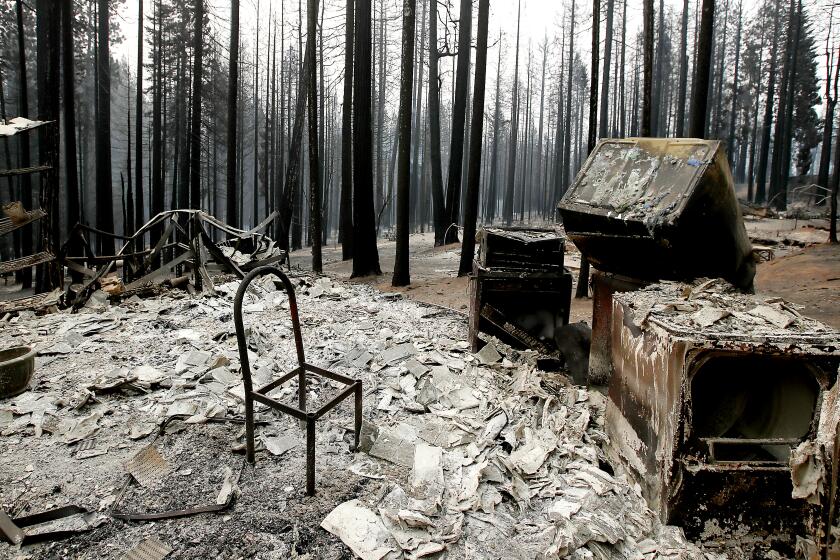Why the Lake Tahoe area is vulnerable to wildfire

- Share via
As the Caldor fire continues to spread, authorities are nervously eyeing the Lake Tahoe Basin as a potential area of devastation.
The forest there, like many others in the western United States, has endured a history of colonization, clear-cut logging and aggressive fire suppression that have upended the natural balance of wildfires. What’s more, it’s populated, with tens of thousands of people who live there year-round and an estimated 15 million who visit each year, according to the local visitors bureau.
Some officials fear the factors could line up to create a disaster that outpaces the Angora fire of 2007.
Thousands of years ago, low-intensity fires regularly burned through the basin, clearing out dense young vegetation. The Washoe people are believed to have set some of these fires for land management purposes; others were sparked by lightning but weren’t put out right away, according to a U.S. Forest Service report on the area’s fire history.
Thousands rushed to leave South Lake Tahoe as the resort city came under an evacuation order due to the Caldor fire.
Europeans colonized the area in the mid-1800s and began clear-cutting trees to supply nearby towns and the Comstock Lode mines with lumber. Researchers estimate that more than 60% of the basin had been stripped by the turn of the century. The trees grew back at roughly the same height, with their comparatively young age and lack of diversity leaving them more vulnerable to damaging fire.
Around the same time, the rise of steam-powered logging equipment, lumber mills and railroads increased the potential for fires to ignite. Newspaper accounts in the 1880s told of entire towns being destroyed. Tahoe City, which then consisted of about 50 houses, two hotels and some stores, burned down in 1894, according to The Los Angeles Times’ archives. Another fire in 1898 burned from the Rubicon area in the mountains to the shore of the lake, destroying “a vast amount of valuable timber,” the archives state.
To stem the losses, the federal government in the early 1900s adopted a policy of putting out wildfires on public lands as quickly as it could. By 1926, the U.S. Forest Service had put in place a directive to suppress all fires at 10 acres or less, an approach adopted by other agencies.
Lake Tahoe faces disastrous ‘urban conflagration’ if Caldor fire reaches communities
Meanwhile, people continued to move into the Lake Tahoe Basin in droves. After World War II, tens of thousands of homes were built amid the trees, and neighborhoods are now filled with alpine-style houses with wood shake roofing and wooden decks, their yards blanketed in pine needles.
While well-intentioned, the aggressive fire suppression practices served to further block the natural cycle of low-intensity fires. They were, up to a point, successful: As recently as 2004, no fire in the area had grown to more than 2,000 acres since 1908, according to a U.S. Forest Service report.
Then, in 2007, the Angora fire, which was sparked by an abandoned campfire, scorched more than 3,100 acres, destroying 254 homes and 75 other structures over six days. Officials blamed high winds and low humidity for the speed with which the fire swept through the area.
For many residents in Northern California, summer has now become a time of dread due to extreme wildfires.
Similar conditions were in place Monday, as the Caldor fire approached the Lake Tahoe Basin, having already burned 177,260 acres and destroyed more than 470 homes.
More to Read
Sign up for Essential California
The most important California stories and recommendations in your inbox every morning.
You may occasionally receive promotional content from the Los Angeles Times.














